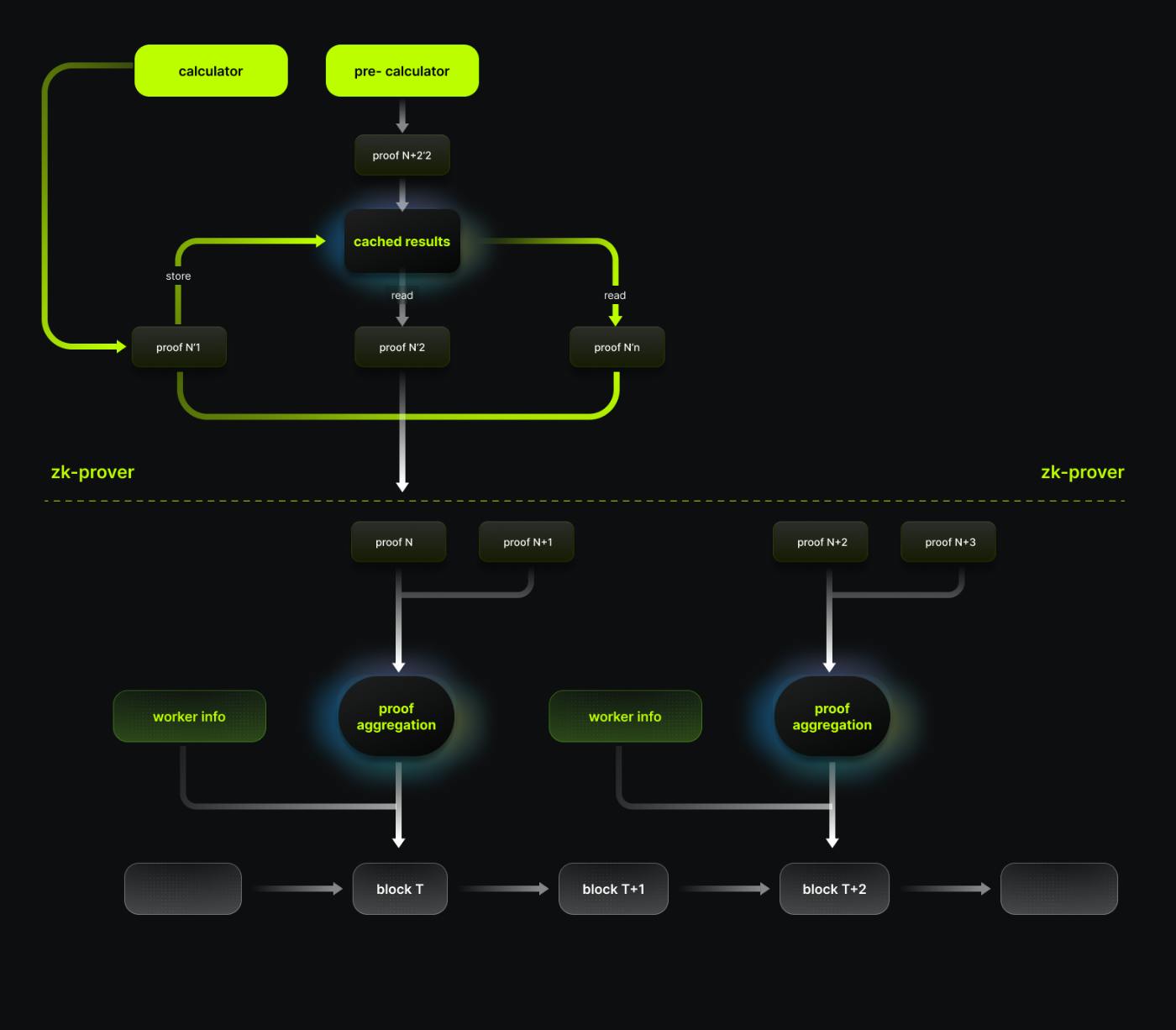
2024-10-1 21:3:7 Author: hackernoon.com(查看原文) 阅读量:2 收藏
Abstract: The new optimization plan preserves the original decentralized and market-driven ZK computation pricing mechanism, while significantly reducing miner expenses and further enhancing the efficiency of ZKP generation.
Modular Compute Layer & RaaS Platform Lumoz has reached
As a leading ZK & AI modular compute layer, Lumoz uses PoW mining to effectively provide computational power for Rollups, ZK-ML, and ZKP verification. The core technical team has been tirelessly working on these innovations. This recent technical advancement not only helps Lumoz stand out in the competitive Web3 ZK computing space but also sets the stage for the upcoming Lumoz ZK-PoW mainnet.
Below are the specific details of the Lumoz ZK-PoW algorithm optimizations:
Improvements to the Existing Verification Process
First, the two-step submission algorithm and optimized ZKP generation scheme proposed by Lumoz significantly improve the efficiency of ZK proof generation and verification while maintaining the decentralization of the ZK-PoW mechanism. This approach was thoroughly validated during the Alpha testnet.
Now, after considerable effort, the Lumoz team has further optimized the original two-step submission model. By streamlining the verification process, they have reduced the consumption of on-chain resources and shortened the overall verification time. In the current process, the proof verification scheme retains the original submission window and incentive mechanisms but replaces the two-step verification process with a single contract call. In this simplified process, workers no longer need to authenticate their identity and task information using a proof hash; instead, the proof ID, containing both personal and task information, is aggregated into the generated zk proof and verified in a single contract call.
With this approach, compute providers can complete the original two-step verification process with just one contract call, reducing on-chain costs by 50% to 60%. Additionally, the proof verification on-chain now occurs at the start of the submission window, reducing the time to reach a trusted state by approximately 30%.

Recursive and Aggregated Proof
Inspired by the Plonky series of algorithms, Lumoz has optimized the proof generation scheme for ZK-PoW by introducing recursion to improve overall proof generation efficiency. In this new approach, the generation steps of multiple proof tasks can be executed in parallel, and through recursion, they are progressively aggregated into a single proof. This allows for ZK verification with a more streamlined proof and lower verification costs for the entire system.
Additionally, the recursive method enables more granular task division, laying the foundation for more efficient and rational allocation of computational power.
More Efficient Allocation of Computational Power
Under the incentive mechanism of ZK-PoW, Lumoz has been able to maintain a stable number of ZK computation nodes. Therefore, designing a more rational allocation mechanism for computational power will greatly enhance the overall proof computation efficiency of the network. The Lumoz team has also conducted research and improvements in this area:
Reuse of Computation Results
In previous versions, the computation process for each proof task was relatively independent and only relied on certain current state parameters of the system. As a result, many computation processes were repetitive and redundant. The new approach uses recursion to break down individual proof tasks into finer granularity, allowing similar modules to be identified between relatively independent proof tasks. For these modules, the new scheme will cache some computation results and reuse them in subsequent processes, avoiding a significant amount of redundant calculations and greatly improving the utilization of computational power.
On the other hand, at a finer granularity, nodes can better save intermediate values during the computation process, allowing for quick recovery of calculations from breakpoints in exceptional scenarios.
Precomputation
Due to the nature of decentralization, computational power in ZK-PoW does not always match supply perfectly. To avoid wasting excess computational power, nodes do not always need to wait for proof tasks to be generated before starting calculations. In the optimized scheme, even if new proof tasks have not yet been released, nodes can determine whether to execute some preliminary calculations based on the current system state and utilize idle resources for computation. Once the proof tasks are published, nodes can validate the precomputed results with minimal overhead and then proceed with the normal computation process. By leveraging this idle computational power, the speed of proof generation has improved by 25%.
Summary
The Lumoz team has optimized the ZK-PoW solution from three angles. Improvements to the upper-layer verification process have reduced on-chain verification costs while also decreasing the time required to reach a trusted state. Optimizations to the underlying proof generation and computational power utilization methods have significantly reduced the time needed for proof generation. The new optimization scheme retains the original decentralized and market-driven pricing mechanism for ZK computational power, while substantially lowering costs for miners and further enhancing the efficiency of ZKP generation.
如有侵权请联系:admin#unsafe.sh